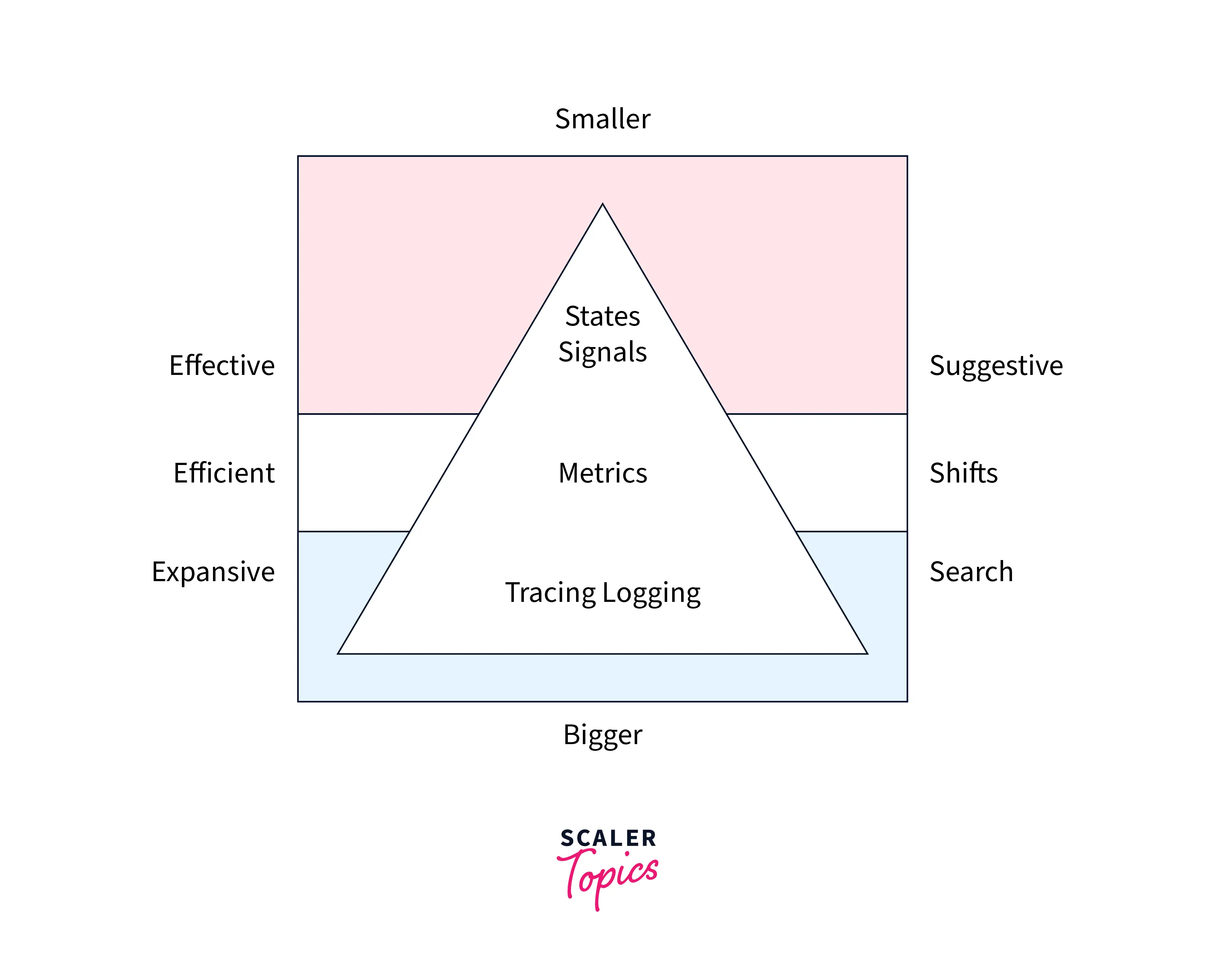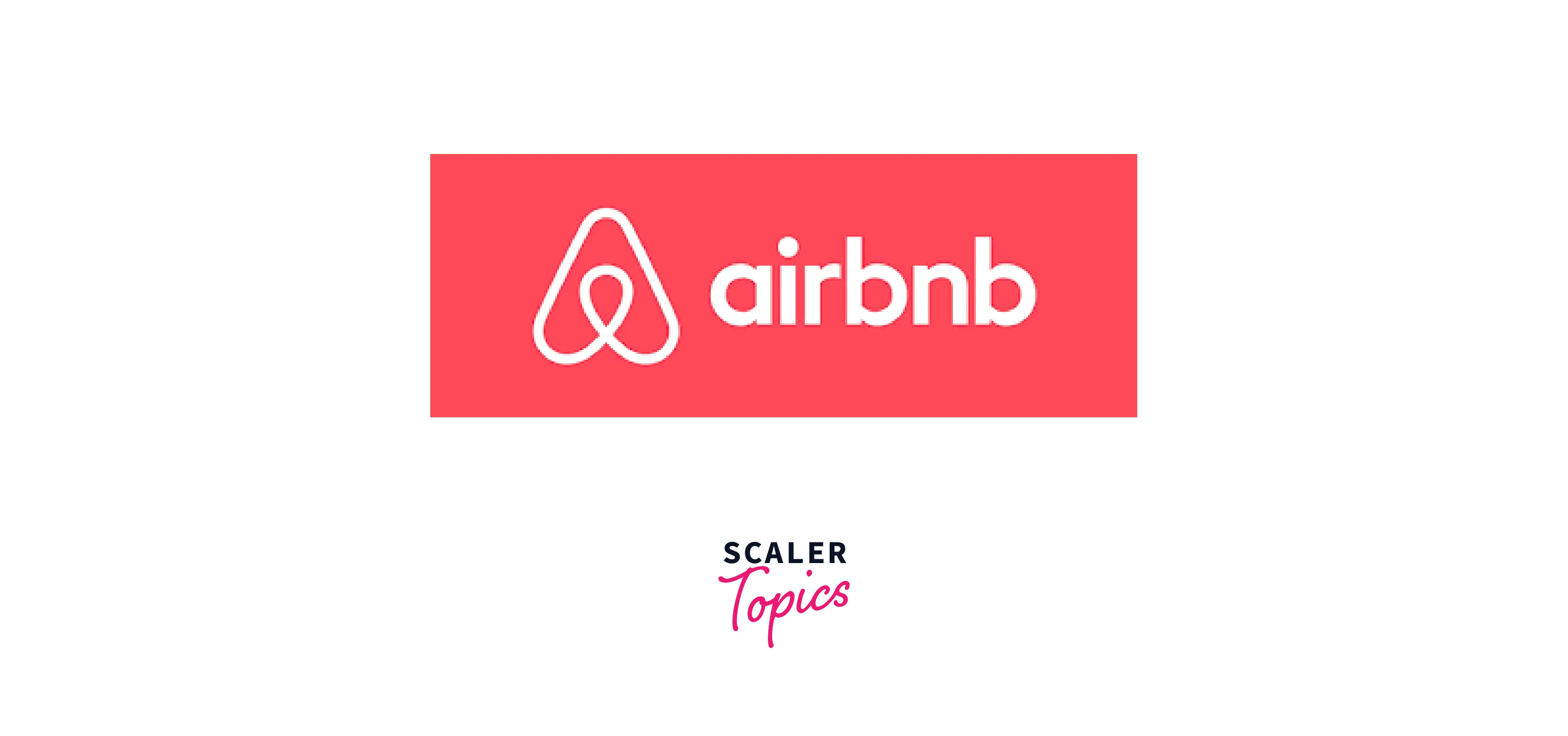Observability in the DevOps Workflow
Overview
DevOps is a software development methodology that combines software development (Dev) and information technology operations (Ops) to increase the speed of software delivery, improve software quality, and create a more collaborative culture between development and operations teams.
DevOps is important because it helps organizations deliver software faster, with higher quality, and at a lower cost. By breaking down the silos` between development and operations teams, DevOps encourages collaboration, communication, and teamwork. This results in faster feedback loops, fewer errors, and better visibility into the software development process.
- DevOps also helps organizations adopt a more continuous delivery approach, where software updates and improvements can be delivered to users quickly and frequently.
- This enables organizations to respond to customer needs and market changes more rapidly, and ultimately gain a competitive edge in their industry.
- DevOps can help organizations improve their overall security posture.
- By automating security testing and integrating security practices into the software development process, organizations can identify and fix security vulnerabilities earlier in the development process, reducing the risk of security breaches.
Overview of Observability and Its Role in The DevOps Workflow
Observability is a key concept in the DevOps workflow that refers to the ability to gain insight into the behavior of complex systems by analyzing data from various sources such as logs, metrics, and traces. It involves monitoring and analyzing the internal states of a system to understand its performance, behavior, and health.
Observability tools typically include monitoring systems, log aggregation tools, tracing tools, and performance analytics platforms. These tools allow teams to monitor and analyze metrics such as CPU utilization, memory usage, network traffic, and application performance. They also provide visibility into the entire application stack, from the infrastructure and network layer to the application layer and user interface.
Observability DevOps Workflow, observability is integrated throughout the software development lifecycle, from development to testing to production. Observability tools are used to monitor applications and infrastructure in production, to test and validate new features and changes, and to troubleshoot issues during development and testing.
By providing real-time insights into the behavior of complex systems, observability helps DevOps teams to identify issues quickly, troubleshoot and resolve problems more efficiently, and ultimately deliver more reliable and resilient software applications.

Tools for Observability
- Prometheus: A popular open-source monitoring tool that collects metrics from various sources and stores them in a time-series database. It also provides a powerful query language for analyzing and visualizing the collected data.
- Grafana: A visualization and alerting platform that can be used with Prometheus to create dashboards and alerts based on the collected metrics.
- Jaeger: A distributed tracing system that can be used to track requests through a microservices architecture. It provides a visual representation of the interactions between the different components of a system.
- Elasticsearch, Logstash, and Kibana (ELK): A popular open-source logging stack that can be used to collect, process, and analyze log data from various sources.
- Datadog: A cloud-based monitoring and analytics platform that can be used to monitor infrastructure, applications, and logs.
- New Relic: A cloud-based observability platform that provides monitoring, tracing, and logging capabilities for modern software environments.
- Dynatrace: An AI-powered observability platform that provides full-stack monitoring, tracing, and automation capabilities for cloud-native applications.
The DevOps Workflow
Planning
This stage involves defining the goals, requirements, and objectives of the project. It includes creating a roadmap, identifying the resources required, and setting timelines for the project.
Development
In this stage, developers write code to create the software. They use tools like version control systems to manage code changes and collaborate.
Testing
The testing stage involves running tests on the software to ensure that it meets the requirements and functions as expected. Tests can be automated or manual and can include functional testing, integration testing, and performance testing.
Deployment
The deployment stage involves moving the software from the development environment to the `production environment. This may involve creating a release candidate, conducting user acceptance testing, and deploying the software to production servers.
Integration
The Integration Stage involves merging code changes from multiple developers into a single branch. This stage includes the use of continuous integration tools to build, test, and package the software automatically. Integration is critical to ensure that code changes are delivered frequently and that issues are detected early in the software development process.
Operation
Once the software is deployed, it needs to be monitored and maintained. The operations team is responsible for monitoring the software and ensuring that it runs smoothly. They also handle any `issues or incidents that arise and work with the development team to resolve them.
Monitor
The Monitoring stage involves tracking the performance and usage of the software. This can include monitoring server performance, tracking user behavior, and collecting analytics data.
Feedback
The feedback stage involves gathering feedback from users and stakeholders and using it to improve the software.This can include collecting bug reports, userfeedback, and performance data and using it to make changes to the software.
Explanation of How Observability can be Incorporated into Each Stage of The Workflow
Planning
- Collect data on user behavior, system dependencies, and performance metrics to inform project plans and prioritize features.
- Use observability tools to identify potential bottlenecks and areas for optimization.
Development
- Use observability to monitor code changes and track build and deployment times.
- Detect errors early on to resolve them quickly before they become more complex.
Testing
- Monitor the performance of tests using observability tools.
- Identify and resolve issues early on to prevent them from impacting users.
Integration
- Use observability to monitor the performance of the software and identify issues that may arise during deployment.
- Conduct automated tests to detect issues before they affect users.
Deployment
- Monitor the performance of the software during deployment using observability tools.
- Use observability to track system performance, analyze logs and metrics, and detect errors.
Operation
- Use observability to monitor the software during operation and identify potential issues before they impact users.
- Analyze performance metrics and logs to detect and resolve issues quickly.
Monitoring
- Use observability tools to track system performance, analyze logs and metrics, and identify potential issues.
- Monitor user behavior and engagement to gather feedback and make improvements.
Feedback
- The feedback stage involves incorporating feedback from users and stakeholders into the development process.
- Observability can be incorporated into this stage by using feedback tools that provide insights into user behavior, as well as APM tools and log aggregation platforms to monitor the behavior of the software in production and identify issues that need to be addressed.
Incorporating Observability into The DevOps Workflow
Planning: During the planning stage, observability can be used to collect data on user behavior, system dependencies, and performance metrics. For example, teams can use observability tools to monitor user engagement, track resource utilization, and identify potential bottlenecks or areas for optimization.
Development: In the development stage, observability can be used to monitor code changes and track build and deployment times. For example, teams can use observability tools to detect errors early on and resolve them quickly before they become more complex and harder to fix.
Testing: During testing, observability can be used to monitor the performance of tests and identify issues before they affect users. For example, teams can use observability tools to track test results and identify potential areas for improvement.
Integration: In the integration stage, observability can be used to monitor the performance of the software and identify issues that may arise during deployment. For example, teams can use observability tools to conduct automated tests to detect issues before they affect users.
Deployment: During deployment, observability can be used to monitor the performance of the software and detect errors. For example, teams can use observability tools to track system performance, analyze logs and metrics, and identify potential issues.
Operation: In the operation stage, observability can be used to monitor the software and identify potential issues before they impact users. For example, teams can use observability tools to analyze performance metrics and logs to detect and resolve issues quickly.
Monitoring: In the monitoring stage, observability can be used to track system performance and identify potential issues. For example, teams can use observability tools to monitor user behavior and engagement to gather feedback and make improvements.
Feedback: Finally, in the feedback stage, observability can be used to gather feedback from users and stakeholders to identify any issues or areas for improvement. For example, developers can use feedback tools to gather feedback from users and stakeholders and use that data to improve the software's functionality and performance.
Best Practices for Implementing Observability in The DevOps Workflow
Implementing observability in the DevOps workflow can be a complex process, but there are several best practices that teams can follow to ensure success. Here are some best practices for implementing observability in the DevOps workflow:
Select The Right Observability Tools: There are many observability tools available, each with its strengths and weaknesses. It's important to choose the right tools for your specific needs. Consider factors such as the types of data you need to collect, the level of granularity required, and the integration with other tools in your tech stack.
Establish Clear Metrics and Alerts: Establishing clear metrics and alerts is essential to make sure that the data you're collecting is actionable. Define key performance indicators (KPIs) and set thresholds for when alerts should be triggered. This will help you identify potential issues before they become critical.
Ensure Data Quality and Consistency: Make sure that the data you're collecting is of high quality and consistent. Use data validation and normalization techniques to ensure that the data is accurate and reliable.
Integrate Observability into your CI/CD Pipeline: Integrate observability into your continuous integration/continuous deployment (CI/CD) pipeline to ensure that you can detect issues early on. Use automated tests and monitoring tools to ensure that your code changes don't negatively impact performance or user experience.
Invest in Training and Education: Observability requires a level of expertise and knowledge to be successful. Invest in training and education for your team to ensure that they have the skills and knowledge necessary to implement and use observability tools effectively.
Continuously Review and Improve: Continuously review and improve your observability practices to ensure that they're effective. Analyze the data you're collecting and adjust your metrics and alerts as necessary. Continuously monitor your observability tools to ensure that they're providing the insights you need.
Provide Tips for Integrating Observability into Existing DevOps Processes and Workflows
- Start small and gradually integrate observability tools into your workflow.
- Choose tools that are compatible with your existing DevOps stack.
- Ensure all team members have access to observability data and understand its importance.
- Define clear metrics and KPIs for observability and regularly review them.
- Continuously monitor and analyze observability data to identify issues and improve performance.
- Use automation to streamline observability tasks and reduce manual efforts.
- Foster a culture of collaboration and continuous learning.
- Prioritize observability as a critical aspect of the DevOps workflow.
- Conduct regular training sessions to upskill team members on observability tools and techniques.
- Incorporate feedback from stakeholders and users to continually improve observability practices.
Observability and Continuous Improvement
Observability is a key enabler of continuous improvement in the DevOps workflow. It allows teams to gain insights into the behavior of their software and identify areas for optimization, thereby improving the overall quality and reliability of the software. Here are some ways that observability can contribute to continuous improvement in the DevOps workflow:
Identifying Areas for Optimization: Observability tools can provide teams with granular data on the performance of their software. By analyzing this data, teams can identify areas for optimization, such as bottlenecks, areas of high resource utilization, or areas of low performance`. This information can be used to optimize the software and improve its performance.
Implementing Feedback Loops: Observability tools can help teams implement feedback loops by collecting data from the software and using it to provide feedback to the development team. For example, teams can use observability tools to monitor user behavior and engagement, identify areas for improvement, and provide feedback to the development team. This feedback can be used to make iterative improvements to the software and improve its overall quality and reliability.
Detecting and Resolving Issues Quickly: Observability tools can help teams detect and resolve issues quickly before they become critical. By monitoring the performance of the software and identifying potential issues early on, teams can take corrective action before the issues impact users.
Providing Insights into System Behavior: Observability tools can provide teams with insights into the behavior of their system, which can be used to improve its performance and reliability. By analyzing the data collected by observability tools, teams can gain a better understanding of how their system is behaving and identify areas for improvement.
Provide Examples of How Observability has led to Continuous Improvement in Real-World DevOps Environments
Observability has become increasingly important in modern DevOps environments, and there are many real-world examples of how it has led to continuous improvement. Here are some examples:
Netflix
Netflix has a mature observability culture, and they use observability tools to monitor every aspect of their platform, from the user interface to the underlying infrastructure. By collecting and analyzing data from their observability tools, they can detect and resolve issues quickly, and make iterative improvements to their platform. For example, they use a tool called Simian Army to simulate failures in their system, which allows them to test their resilience and identify areas for improvement.

Airbnb
Airbnb uses observability tools to monitor the performance of its application and identify potential issues before they impact users. They use a tool called SkyWalking to monitor their microservices architecture and identify areas for optimization. By analyzing the data collected by SkyWalking, they were able to identify a bottleneck in their system and optimize their code, resulting in a 30% reduction in response times.

Slack
Slack uses observability tools to monitor the performance of its application and detect and resolve issues quickly. They use a tool called Splunk to monitor their infrastructure and identify potential issues. By analyzing the data collected by Splunk, they were able to identify a network latency issue and optimize their network architecture, resulting in a significant performance improvement.

LinkedIn uses observability tools to monitor the performance of their application and identify areas for optimization. They use a tool called Kafka to monitor their messaging infrastructure and identify potential issues. By analyzing the data collected by Kafka, they were able to identify a bottleneck in their system and optimize their messaging infrastructure, resulting in a significant performance improvement.

Conclusion
- DevOps is a set of practices that combine software development and IT operations to improve software delivery and reliability.
- Observability is critical in the DevOps workflow to gain insights into software behavior, identify issues, and continuously improve performance.
- Observability can be incorporated into each stage of the DevOps workflow, such as planning, testing, integration, development, operation, deployment, monitoring, and feedback.
- Observability tools can be used to collect and analyze data to identify potential issues, optimize the system, ad continuously improve software performance and reliability.
- Implementing best practices for observability, such as selecting the right tools, establishing clear metrics and alerts, and fostering a culture of continuous improvement, can help teams make the most of their observability data.
- Real-world examples from companies like Netflix, Airbnb, Slack, and LinkedIn demonstrate how observability can lead to continuous improvement in software performance and deliver a better user experience.
- Observability is a crucial component of modern Observability DevOps practices and will continue to play a key role in the future of software development and delivery.
